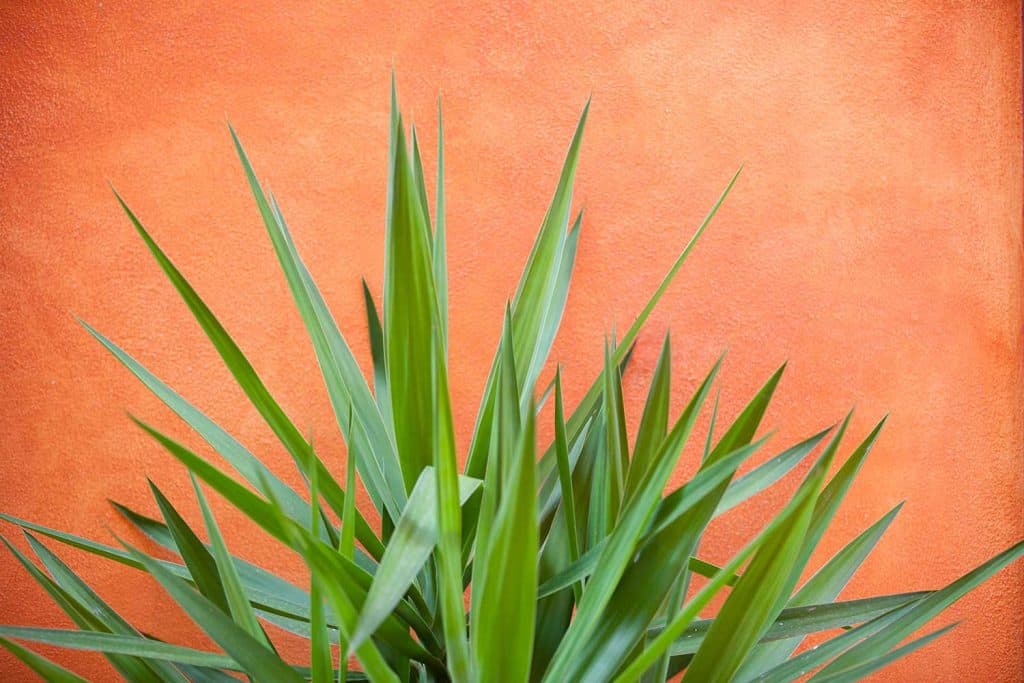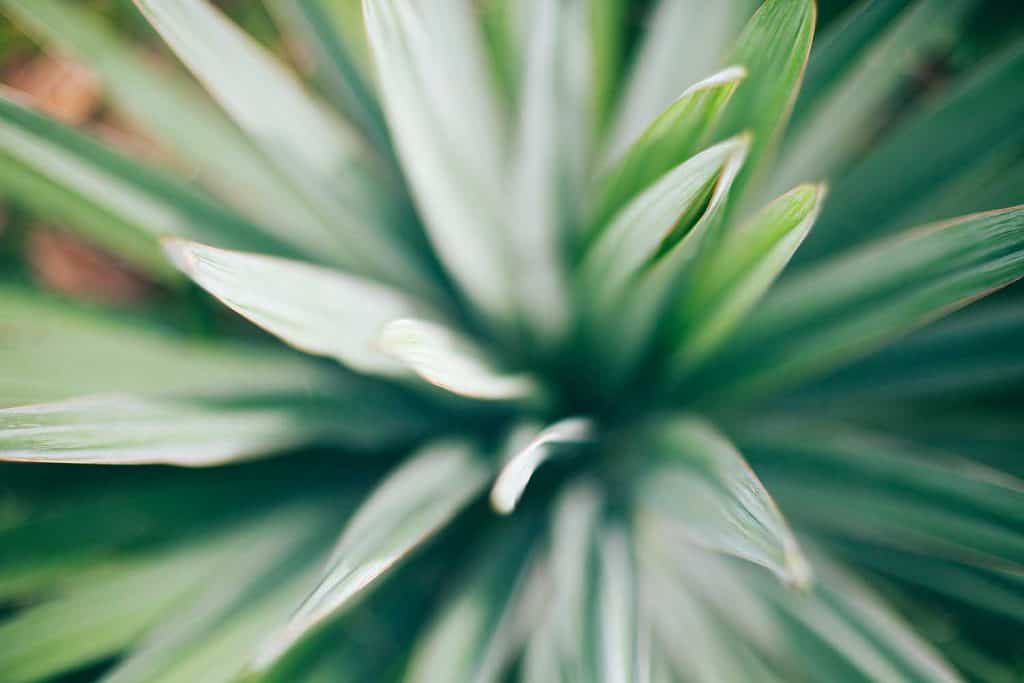Deciding when to repot a plant can be difficult without some extra help. Is your yucca too big for its current planter, or do you want to make room for future growth? We have done plenty of research to find you the answers. Let's look into this.
According to what we found, you should only repot a yucca when it is necessary. Typically, yucca will live in the same pot for about three years before needing repotting. These desert plants prefer a snug environment rather than a pot with tons of room, so keep that in mind. One easy indicator that your yucca is ready for a new pot is when its roots grow out of its planter's drainage hole. Yuccas are slow-growing, so constant repotting can hurt your plant's root system and even stunt its growth.
As we dive into this topic, we will share tips for repotting a yucca and tag some helpful related products. Regardless of how old your plant is, make sure to let it settle into its pot and not move it too often. With that said, let's get right into this post!
![A harshly lit bright green yukka plant with sharp pointed leaves against dark red corrugated metal wall, Should I Repot My Yucca Plant? [And How To Do So]](https://gardentabs.com/wp-content/uploads/2021/06/Should-I-Repot-My-Yucca-Plant-683x1024.png)
Where Does Yucca Grow?
When it comes to where yuccas grow, this desert plant is native to the southwestern United States and Mexico. Yuccas are succulents and belong to the Asparagaceae family, meaning they thrive in dry, desert climates.
These flowering plants are prevalent in the western United States and have become a staple in water-conscious agriculture. Although yuccas do best in high desert areas, they can also live and grow in climates with tons of sun and little humidity. Yuccas grow in zones five to ten and prefer sandy, alkaline-rich soil.

Do Yuccas Like To Be Root Bound?
Like many desert plants, yuccas do like to be root-bound. One of the main reasons yuccas roots sprawl is the extreme climates this plant typically grows in. Yuccas are drought-friendly, meaning they can go months without water because of their immense root system. When it comes to root-bound plants in a pot, they can be challenging to move and replant because of their intricate underground roots.
Crape Myrtle Guy Live Red Yucca Plant
Here is a live red yucca plant from CrapeMyrtleGuy to try in your garden. This live yucca comes six to 12 inches tall and will be in a quart-sized container upon arrival.
View this live yucca on Amazon here.
What Kind Of Soil Does A Yucca Plant Need?
From what we found, yuccas are not extremely picky when it comes to the quality of their soil. Yuccas tend to like their dirt mixed with sand or gravel because they drain water from the plant well. Yuccas do not like a ton of moisture, so the soil you choose needs to drain water well. Another type of soil these desert plants enjoy is dirt high in alkaline and anything on the drier side. Remember, yuccas are native to arid desert climates, so it is best to imitate those conditions at home.
Kenzoplants Organic Succulents & Cactus Soil Mix
Here is a fast-draining soil from the Kenzoplants Store that is perfect for yuccas. This potting soil is pre-mixed with gravel for drainage and comes in a few different sizes.
Check out this organic soil mix on Amazon here.
Does Yucca Need A Big Pot?
Contrary to popular belief, yuccas do not need big pots. These desert succulents are slightly pot-bound, meaning they like to fit just right into their planter. Typically, yuccas fill out their pot with their roots and want to squeeze into their environment. From what we found, it is best to choose a big enough pot for growth but not enough to promote a ton of root sprawling.
Here we have a self-watering and aerating planter from the HBServices brand. This pot has a built-in water reservoir, is suitable for indoor and outdoor use, and comes in various sizes to fit your plant.
Follow this link to view this pot on Amazon.
How Do I Repot A Yucca?

When it comes to repotting yucca, we suggest you start by filling your new pot with a fresh mix of sand, gravel, and dirt to about halfway. After that, make sure to carefully remove your current yucca from its old planter, avoiding breaking any extra roots.
Once your plant is in its new pot, fill the rest up with a third of dirt and two-thirds sand or gravel for proper drainage. It is best to use all-new soil in your yuccas pot to avoid transferring any diseases or pests from its previous planter.
Do I Need To Repot My Yucca?
If you notice that your yucca has outgrown or stopped growing in its current pot, replanting might be the best option. When it comes to the need for repotting, this should not be more than every few years and is not necessary for many yucca plants. We read that even a simple refreshing of dirt and a little fertilizer can help with stunted yucca plants. If your yucca has outgrown its current pot, that is when it's a good time to size up and repot your plant. We suggest going up one container size to give your plant enough room for two to three years of growth.
The Grow Co Slow Release Succulent Plant Food
Here we have a slow-release fertilizer from The Grow Co that is perfect for succulents. This plant food promises to feed your succulents for up to nine months between uses and is UREA free.
See this plant food on Amazon here.
How Often Should I Water A Yucca Plant?
According to what we found, you should only water your yucca about one to two times per month. Yuccas have a spring and summer growing period, so extra watering during that time is fine, depending on your plant. We also found that yuccas go into dormancy during the winter months, so less water is a good idea through that season. Ideally, you should have a watering schedule for your yucca plant and check its soil regularly for too much or too little moisture.
What Are Signs Of An Overwatered Yucca?
Depending on the amount of overwatering, yuccas will start to turn yellow on their leaves and even begin to rot. If your plant starts to feel spongey or extremely damp near its base, stop watering it immediately and make sure to place it in a bright, sunny location. Too much moisture can be deadly for yucca plants and is very bad for their roots and overall health. As mentioned earlier, yuccas need proper drainage in their soil and pot because they tend to be water-intolerant.
Can You Split A Yucca? [And How To Replant It]

When it comes to whether you can split a yucca or not, we found that is possible. Although yuccas are root-bound, splitting one is as easy as finding new growth and removing it from your existing plant. To start:
- Grab a pair of leather/thick gardening gloves.
- Locate an area of new growth or one you wish to split.
- Gently remove or cut off the section of yucca you are splitting.
- Dig around the roots of the now separated plant.
- Remove the entire split section from the original yucca.
- Place the split section into a pot or ground in its mixed soil.
- Prune off any excess dead leaves or areas off your new and original plant.
- Pat down the soil near your newly split yucca and water it lightly.
Will My Split Yucca Go Into Shock?
Once your yucca has been split, it is normal for the new and old plant to go into a brief shock period. Usually, this will only be a week or two and will mostly be yellowing leaves. The best time to split a yucca is during the early spring, right before their growing season, so there is time for rooting. It is best to water your newly separated yucca more often than you usually would during its first few weeks to promote growth.
Our Final Thoughts
Whether you have yuccas in your garden or are just looking into planting one, there are plenty of things to keep in mind. From what we discovered, yuccas do not need to be repotted more than every three years and prefer a snug environment to grow in.
Although yuccas are root-bound, you can split them up and replant these succulents around your garden. We found that yuccas will tell you when they need more room by growing out of their current planter's drainage hole. Regardless of where a yucca is planted, make sure to water it lightly, give it plenty of sunlight, and mix its soil with sand or gravel to allow for proper drainage.
Want to catch up on everything you missed? Head on over to these garden-related posts below!
How Big Does A Yucca Grow? [By Type Of Yucca]





Once the plants roots start growing out the drainage hole, it stops the drainage and your plant could be sitting in standing water so check if your plant has been in its pot for a while.
Marty